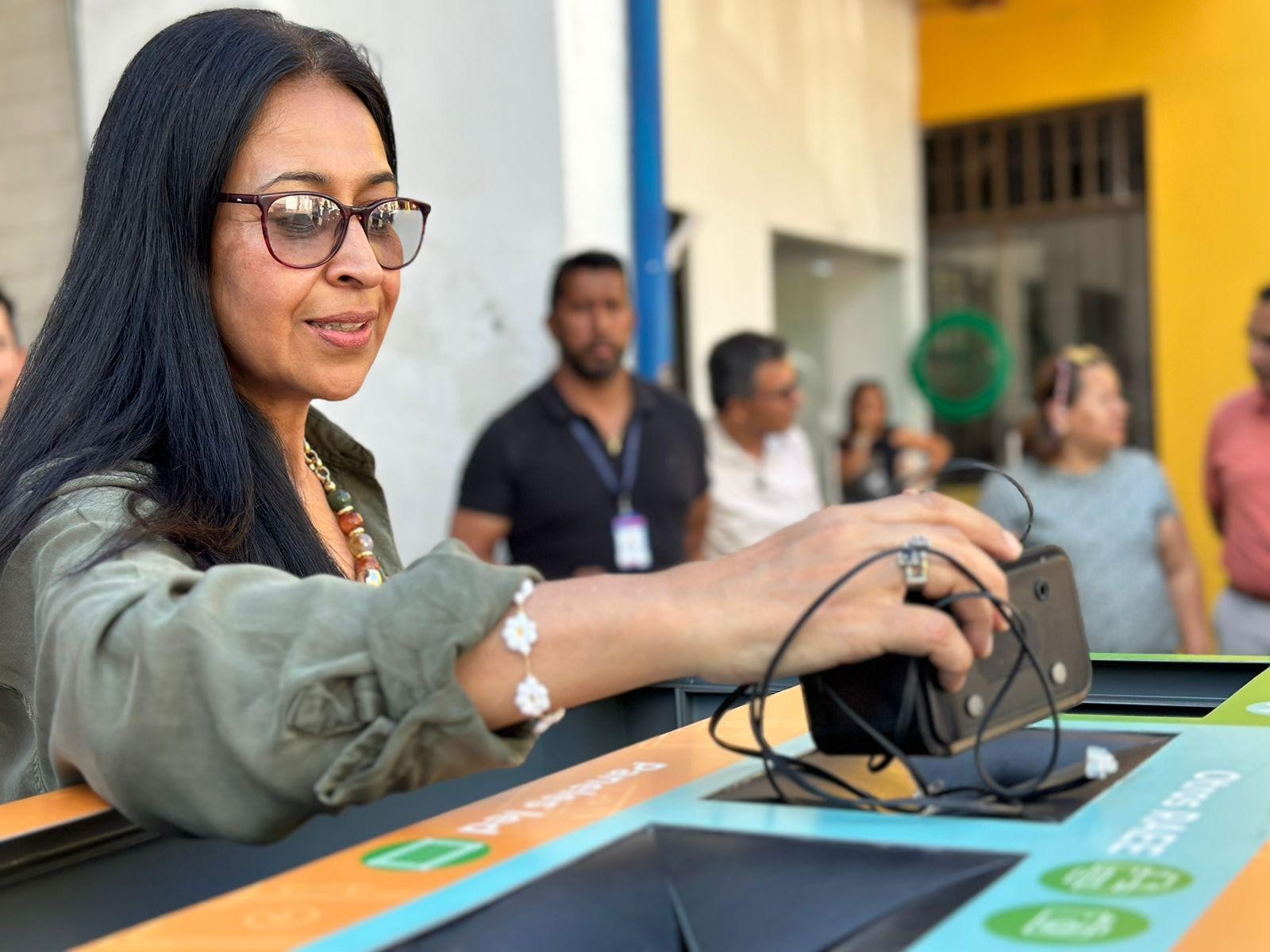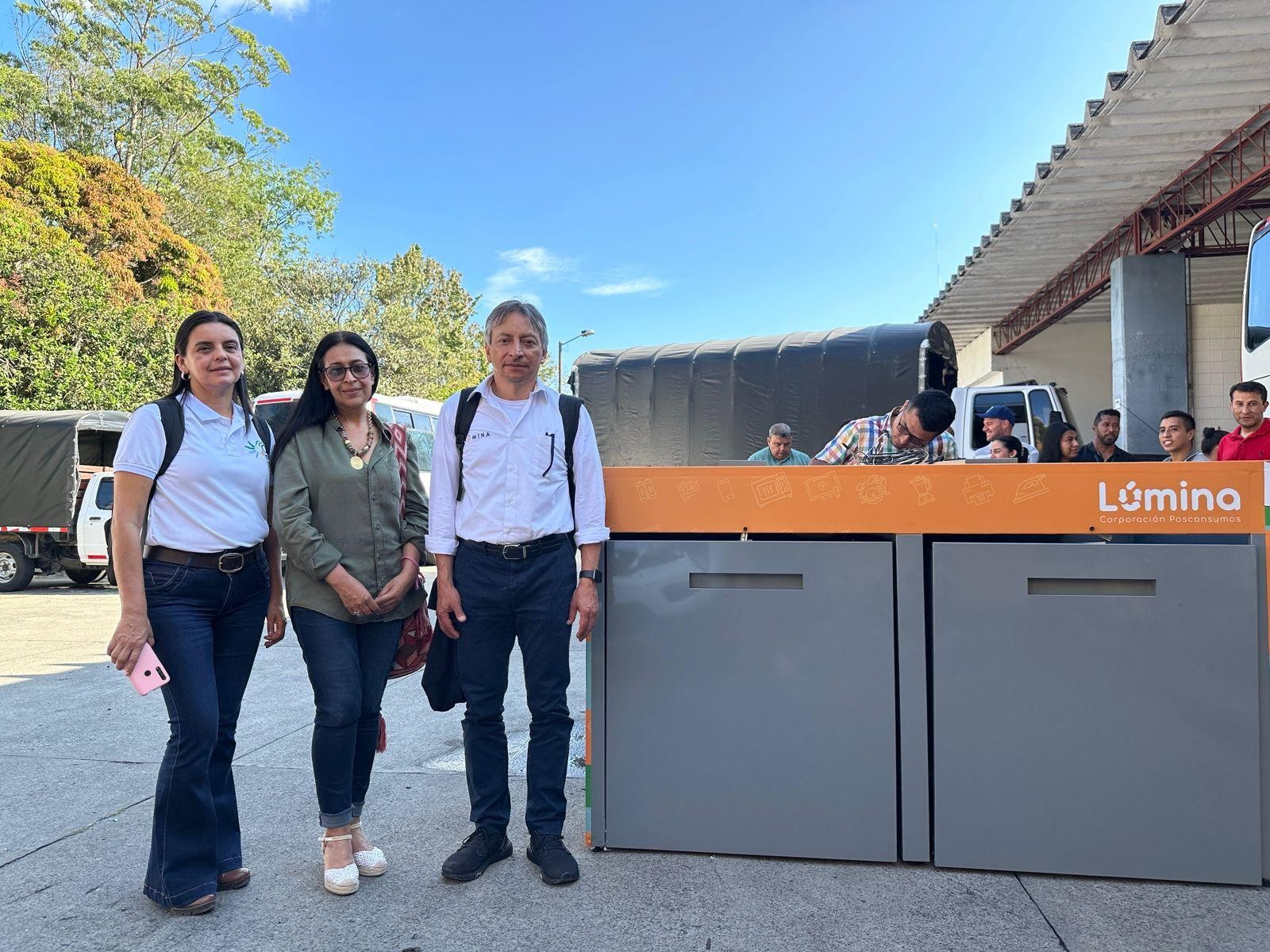News
Unicauca Strengthens Its Environmental Commitment with the Installation of an Electronic Waste Container
The University of Cauca, in partnership with Lumina, has installed a container for the collection of post-consumer waste. Located in the José María Serrano Prada Library, this collection point facilitates the proper disposal of batteries, light bulbs, and electronic devices.
The University of Cauca, in collaboration with the Lumina Corporation and through the joint efforts of the Technical Committee for Environmental Management—led by the Center for Quality Management and Institutional Accreditation—has installed a specialized container for post-consumer waste disposal in the José María Serrano Prada Library, located in the Faculty of Natural, Exact, and Educational Sciences. This initiative is part of the institution’s efforts to strengthen sustainable environmental practices and raise awareness about the proper disposal of special waste, contributing to environmental conservation.

Provided photo
The container, provided by Lumina, is designed to collect post-consumer waste such as batteries, accumulators, unused electrical and electronic devices, and fluorescent light bulbs. Its installation aims to provide students and faculty with an appropriate space to dispose of these items, preventing them from being thrown into regular trash bins or inappropriately recycled.
Proper disposal of post-consumer waste is essential to mitigating negative environmental impacts. If not managed correctly, these types of waste can release toxic substances that pollute water, soil, and air. Moreover, their proper disposal allows for the recovery of recyclable materials that can be reused in the manufacturing of new products, contributing to the circular economy.
How to Properly Classify Post-Consumer Waste?
The University’s Environmental Management Operations Team emphasizes the importance of correctly classifying post-consumer waste to maximize environmental benefits and prevent contamination of other types of waste.
Batteries and Accumulators: All types of batteries, including alkaline, rechargeable, and lithium batteries, should be placed in the designated section.
Fluorescent Light Bulbs: These bulbs must be handled carefully due to their fragility and mercury content. Incandescent and LED bulbs should not be disposed of in the same compartment as fluorescent bulbs. It is important to ensure that the bulbs are not broken before disposal to avoid accidents and the release of toxic gases.
Electrical and Electronic Devices (WEEE - Waste Electrical and Electronic Equipment): Items such as cell phones, chargers, headphones, and small household appliances also have a designated compartment in the container. Be sure not to mix cables or chargers with other types of waste.

Provided photo
The University of Cauca calls on the entire academic community to actively participate in this initiative. "With this container, we are not only promoting a culture of responsible recycling, but we also aim to raise awareness among students, faculty, and administrative staff about the importance of proper special waste management, which requires different treatment to prevent harm to the natural environment," explained Alexandra Muñoz, Environmental Management Coordinator.
Written by: Center for Communications Management

